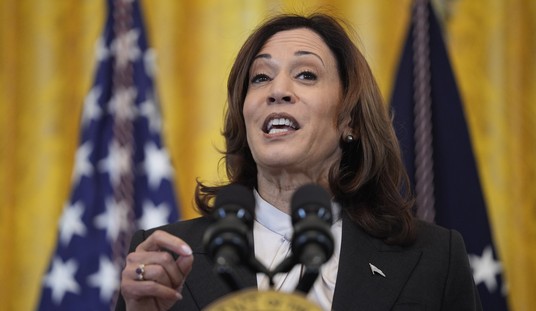Unfortunately, the Port Authority of Allegheny County – Pittsburgh’s government mass-transit bus and rail monopoly -- is a typical example of how far the American mass-transit model has devolved after 40-plus years of horrid management, easy federal money and the unconditional support of local and national politicians. To find out if cities elsewhere have found a better way of providing bus and rail service for their people, I recently called our favorite international transit guru and public policy consultant Wendell Cox (www.demographia.com) at his office in southern Illinois near St. Louis.
Q: What's the best mass-transit system in the world?
A: Tokyo. The system is largely commuter rail. There are 10 large, private, profitable commuter rail systems. There are two largely profitable subway systems in the city of Tokyo -- when I say Tokyo, I'm talking about 35 million people stretched over about 3,000 square miles -- one and half times the size of Los Angeles. So I'm not just talking about the city of Tokyo. But in this whole area, transit is profitable. Two big subways in Tokyo actually cover all their operating costs as well as almost all of their capital costs. If you think of the Port Authority, it's lucky if it is covering 30 percent of its operating costs. In Tokyo the commuter rail service is private, they earn strong profits, and they pay for their capital costs and their expansion. Over all the major systems that account for more than 90 percent of the ridership are profitable.
Q: Why?
A: It’s not because they came in later and said, “Oh, we need to build these rail systems.” After World War II, obviously Japan was wiped out, as the cities expanded. Tokyo in 1940 probably had 5 million people; today we have 35 million. While we all know that Japan is losing population, the growth of the Japanese urban areas in the 1960s and 1970s was something to behold. What happened as they grew, these private railroads -- not public railroads; there was not an ounce of public planning here, by the way -- expanded their systems.
You have a situation now where, believe it or not, 60 to 65 percent of the movement of people in the Tokyo area and the Osaka area is by transit -- a stunning figure. When you figure that in the Pittsburgh area the number is less than 2 percent. By the way, it only exceeds 4 percent in the U.S.A. in New York, which is 9 percent.
Another thing helped them as well -- World War II. A lot of people don’t realize that Japanese GDP in 1950, adjusted for inflation, was under $3,000. It was at Third World rates. Japan, first of all, was not rich before World War II, which a lot of people don’t realize; and secondly, after the war it had been devastated. In the process Japan has become one of the five richest large countries in the world. But in this country, by 1930, there were .75 cars per household -- an impressive number. Nobody equaled it until Canada in 1955. Japan did not reach U.S. 1930 auto ownership rates until 1990.
Recommended
So what this means is that while the cities were expanding and growing, transit was growing up and the auto was not available to most people. All of this goes to say that these are incredible, unbelievable systems in Japan and they can not be replicated. Nobody came in with a federal program or a program from the Japanese Diet and started imposing rail lines on the existing urban footprint. Transit was built as the city expanded.
Q: What's the best transit system in the United States -- or is there one?
A: Boy.... Oh, San Diego. I would not call it the best. I'd call it the least worst. San Diego has done some wonderful things. They started contracting out transit service in 1979. Their costs are much lower than other systems as a result. More than 40 percent of their system is contracted out now. They carry a huge increase in ridership compared to what they had in 1980 -- a ridership increase that's far greater than the population increase. Everybody likes to talk about the San Diego Trolley, the light rail line. It is, again, the least worst trolley in the country. It is less unsuccessful as a result of its first line that went to the Mexican border. For example, if those Port Authority tunnels under the Allegheny River in Pittsburgh were ending up at the Mexican border, they might make some sense. But in the early years, this San Diego line covered 90 percent of its operating cost; it never covered any capital. As the system has expanded, it’s been decimated. There’s no other destination like the Mexican border. When you talk about transit in the United States, you have to be talking about best prisoner awards. These systems are a scourge on taxpayers. There are some that do some wonderful things, but nobody does it all right.
I keep arguing in my own mind, who is more responsible for the abject failure of transit in the United States? And mind you -- transit expenditures have gone up more than 300 percent adjusted for inflation since 1970 and ridership has gone up less than 20 percent. There is no other sector of the economy, including health care, where I can find escalation even close to that. Transit holds the record. It is a damned outrage how bad transit has been.
I continually argue with myself, “Well, is it because of the unions?” -- and I don’t blame the unions, because if you are a union leader there in Pittsburgh and there is no competition, why shouldn’t you ask for the moon? You should be thrown out if you don’s ask for the moon. So there's this monopoly labor negotiating thing, where the unions play a part and where management plays a part, and where to some extent you will find management rooting for the unions because they know whatever the unions get they are going to get … . Or is it the vendors -- the people who build these darn light rail systems?
The whole point of transit is to maximize costs. The management-labor arrangements maximize costs and so do the vendor arrangements with respect to capital expenditures. All that being said, there is no hope whatsoever for transit.
Q: Why is there no hope?
A: The first reason is that it is structurally incapable to be designed to do much more than it does today. Think about this: The Port Authority, for all of its problems, probably does a reasonably decent job of getting people to Downtown. As a matter of fact, something like 40 percent of downtown Pittsburgh workers get their on transit -- one of the highest shares in the country.
I was out in Pittsburgh about a year ago…. Think about what you’d need to do if you wanted to increase the transit market share for one of the business centers on the way to the airport. How would you structure transit to replicate the 40 percent downtown share? Well, I’ll tell you how you do it. You’d need to have a series of routes that converge on this one point, just like downtown. I don’t care if there is one job there or 50,000 jobs there, because otherwise you are talking about service that cannot compete with the automobile.
That is why if you look at the Western world -- and I mean North America, including Canada, Australia and Western Europe -- you will not find any non-central business center that has a substantial market share for transit. If you live in the suburbs of Paris, for example -- where 80 percent of the people live and work and 70 percent of the jobs are -- you can’t possibly get to another part of the suburbs by transit unless you are willing to go all the way downtown to the core and switch. There are people that do that because they don’t have any money, but anyone with a car is going to drive.
So the first reason why there is no hope for transit is that it can not be designed to be competitive with the automobile, except for very specific locations -- that really only being a downtown area. It has to be a good concentrated downtown area, and they don’t come much better in my view than Pittsburgh. The other reason why there is no hope for transit is that whatever you give them will be frittered away without any impact whatsoever. That gets us back to this whole bit of a 300 percent expenditure increase at the same time you’ve had a 20 percent ridership increase. If any one of these bozos wants to think about putting taxes on greenhouse gases and giving the money to transit -- hey, what a loser. You will get nothing.
Q: A while ago I came across some figures for the Port Authority from the early 1980s. Ridership then was about 100 million a year; it had about 2,800 employees, almost 1,000 buses and about 90 trolleys. In 2006 it had about 3,000 employees, about 1,000 buses and 80 light-rail cars. Its budget had gone up 42 percent faster than inflation since 1982 -- but they were carrying 70 million people instead of 100 million. They had lost 30 percent of their business yet everything stayed the same -- and no one even notices this.
A: I know. You are absolutely right -- and you can find that just about everywhere. There are some exceptions. But the point you're making with respect to the Port Authority makes my point exactly: For most transit agencies in the United States, if they were to write a mission statement that is reflective of what they do, they would indicate that they exist for the purpose of serving their employees and vendors.
Q: What about Europe? Aren't there reforms going on there?
A: Yes. I do a lot of speaking in Europe and I tell them, "Don't think of America as free market. You guys are far more free market than we are." They are contracting out services all over the place. The entire Stockholm system is contracted out. Every bus is contracted out. The commuter rail is contracted out. A good portion of the commuter rail service in Germany either has been or will be contracted out. In the United States we have this massive, stupid, inefficient, destructive federal program that in my view has done more to destroy transit than anything else besides the management-labor cabal and the vendors.
In Europe what they discovered about 15 years ago is that centralized funding creates all sorts of incentives for locals to waste money. So just about everywhere in Europe they have stopped their national transit programs and forced it down to the local level. They've said, "If you want to spend all that money on transit, you go right ahead." In a sense, they de-nationalized funding and they de-nationalized responsibility.
Q: Is the current model of mass transit in the USA dead after 40 years?
A: It's not dead because it is being kept alive by an IV from Washington and taxpayers. The very idea that Pennsylvania wants to impose tolls on I-80 with part of the money going to transit shows the bankruptcy of the whole thing. You are not going to get anything for it. Transit is on life support. It is very politically strong. And you know what, we can keep brain-dead transit alive for as long as there is stuff coming out of those IV needles. But if you want to talk about people, role in the community and all that kind of thing, not only is the model dead, but my sense is that transit is dead. That's because this model has so poorly served the industry and the people that I'm not sure there is anything that can be done to resuscitate it.
Q: What would you do if you got to run the Port Authority?
A: If I were given dictatorial powers to go into a place like Pittsburgh and not have to deal with the feds and everything, I would propose that what we do is first offer a program of leased cars to our low-income riders and basically try to move all of our low-income drivers who can drive to cars. And by the way, the mathematics work very well.
Secondly, I would strengthen dial-a-ride (Access) programs to help those people we can’t help with cars. And thirdly, I would provide whatever service can be provided by bus or rail profitably. That means that people who work downtown are going to have to start paying their share. Maybe that hurts downtown. But the fact is, there’s no reason why a downtown employee should not be paying the full cost of his transit ride to downtown.
That model might very well in the long run get you more transit ridership and it would provide incredibly better mobility to low-income people who are being held back by their reliance on transit. But generally, what I am saying is that when you get to a situation where transit represents 4 percent of ridership -- which it does in Chicago, Washington and San Francisco, those being the second, third and fourth to New York City at 9 percent -- it’s dead.
Now that’s not to suggest there aren’t things that can be saved. The downtown-oriented systems are great, but they don’t need to be subsidized. Why are we subsidizing downtown? It’s because they have the power -- it’s very simple. If somebody were ever to take a serious look at the subsidies to downtown, it would be astounding -- and I’m not just talking about transit.
Q: Is anyone in the U.S.A. looking at a new model or calling for one?
A: In terms of anyone thinking of an alternative, you have to recognize that it is sort of a self-supporting, incestuous situation. The unions never give up. They hate contracting because it saves 40 or 50 percent. The politicians in Washington love it. You've got a transit industry that's spending $50 billion a year. I don't know what the American Public Transit Association budget is, but I know they walk the halls of Congress all the time. They take members of Congress to their meetings. If you want to talk about lobbying abuses, I'd start with the public sector quite frankly. So the point is, of course, nobody is thinking about changing anything.

























Join the conversation as a VIP Member